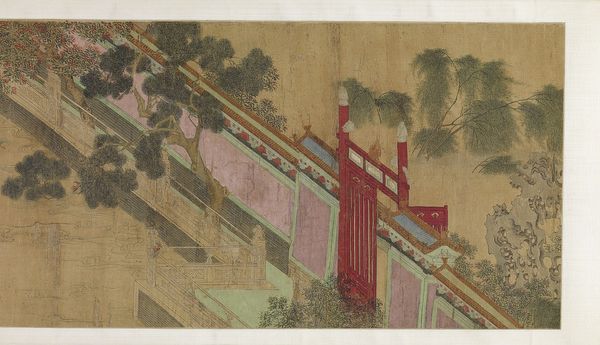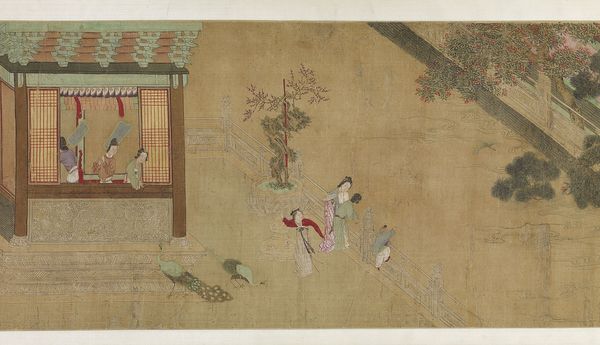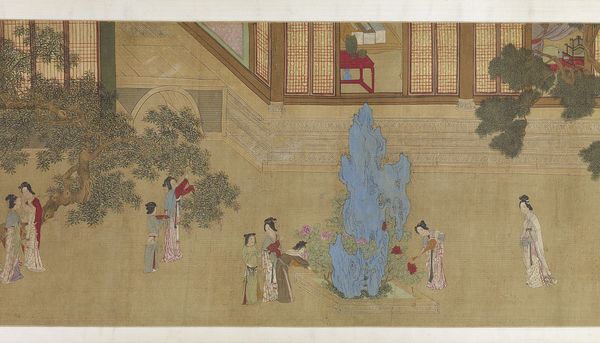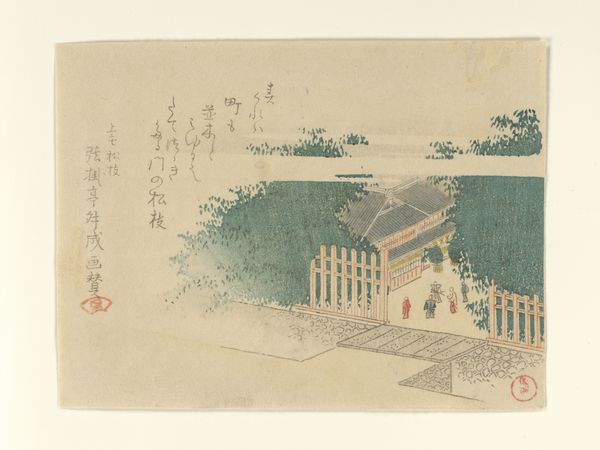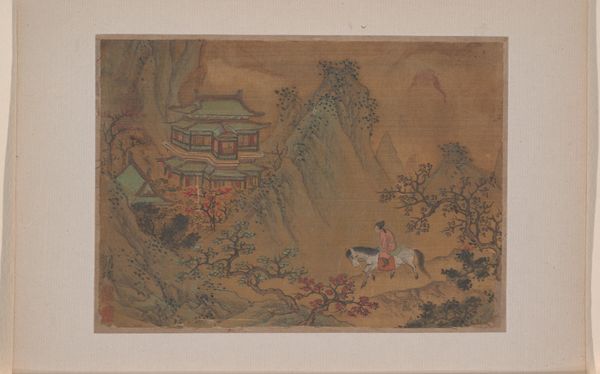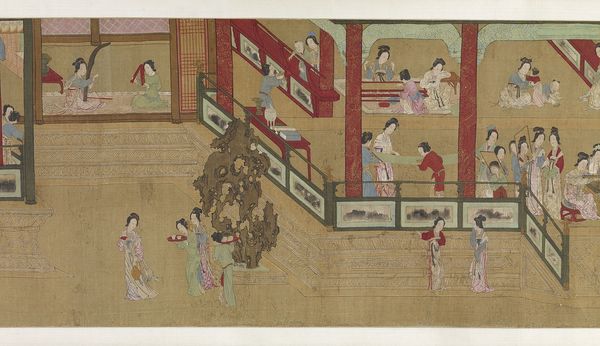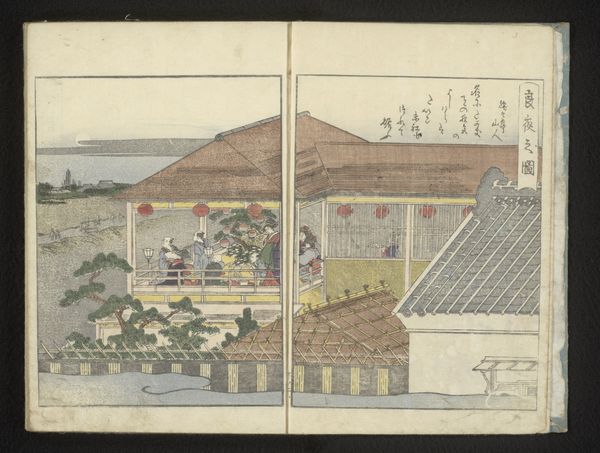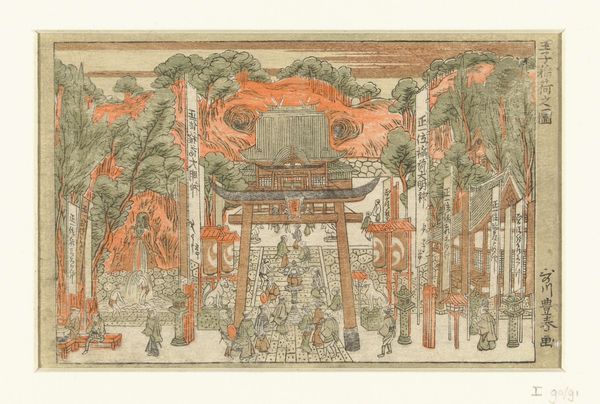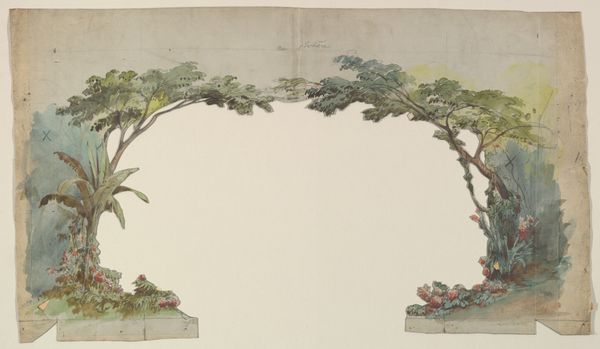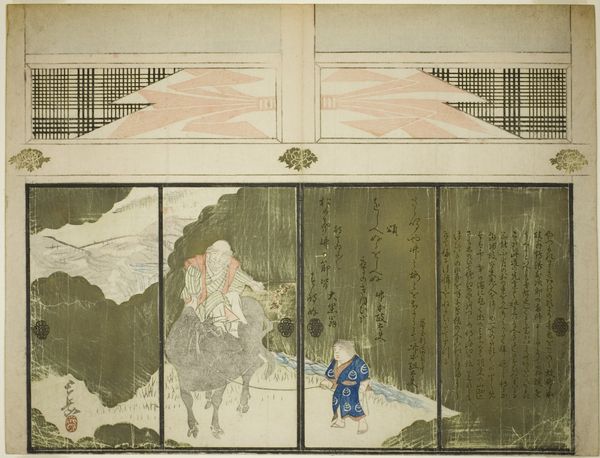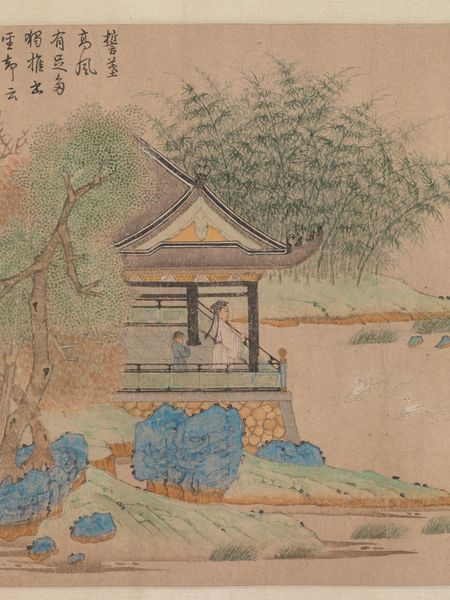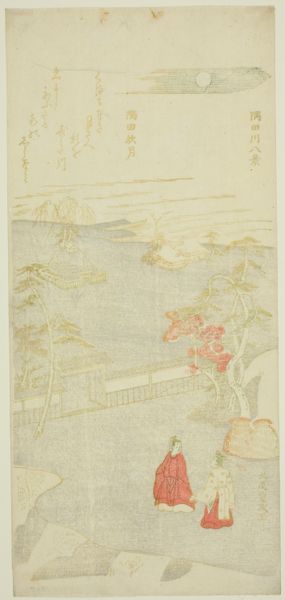
painting, watercolor
#
water colours
#
painting
#
asian-art
#
landscape
#
figuration
#
watercolor
#
genre-painting
#
watercolor
Copyright: Public domain
Curator: Here we have "Spring Morning in the Han Palace," a watercolor work painted around 1530 by Qiu Ying. The piece is an intimate glimpse into court life. Editor: My immediate impression is of constrained beauty. The architectural detail feels quite deliberate, even oppressive. It creates a stage, almost, for the figures within. Curator: Right, look at the precision! Qiu Ying meticulously rendered everything, from the latticework windows to the specific garments. We can consider the immense skill involved, the labor, to represent wealth and power with such delicate materials. Watercolor can be so deceptive— appearing effortless, but of course requiring extensive craft and control. Editor: Absolutely, and consider who has access to these spaces and the materials to produce such a detailed work. This image certainly gives off an atmosphere of luxury. But to whom does this luxury extend? We might ask ourselves how the lives of those who serve, those who provide the literal foundations of such an opulent setting, are reflected – or not reflected – in this idealized vision of court life. Are their voices present in this "morning" scene? Curator: That’s an important perspective, and something a materialist approach urges us to think about. Let's not only examine this piece for its artistry but its socioeconomic fingerprints. Consider the cultivation and preparation of pigments, silk production, and of course the patronage system that would commission and support such intricate art. The whole painting becomes this visible symbol of wealth and power distribution. Editor: Precisely. The composition reinforces this idea— everything contained, meticulously ordered. Consider too, the gaze of the viewer. We are positioned outside, looking in. Who are we meant to be in this relationship of observer and observed? This perspective gives those who don’t have access a safe position to participate in this setting by gazing from a safe distance. It speaks volumes about visibility, access, and maybe also, implicit boundaries within the Han palace and beyond. Curator: Looking at the ways this piece highlights social structure and craftmanship makes me reconsider what this genre painting wants us to see - not just pretty faces in ornate spaces, but the culmination of the socio-economic apparatus necessary to produce this world. Editor: It enriches our understanding beyond simply an aesthetic appreciation; and in my case, invites a critical perspective, emphasizing awareness of the narratives and the silences within its artistry.
Comments
No comments
Be the first to comment and join the conversation on the ultimate creative platform.
